The Temple of Hercules is the dominating building in the Sacred Area of the Republican Temples. It was built in the last quarter of the second or the first half of the first century BC. It is strictly oriented east-west.
Plan of the temple. From SO I. Reconstruction drawing. Parco Archeologico di Ostia Antica. The temple measures 31 x 16 metres. The podium is of tufa (opus quadratum), decorated with a cornice, and resting on a travertine base of two steps. A flight of eight travertine treads leads to the pronaos, which has a facade of six columns. In the cella remains of the original opus quasi reticulatum and Trajanic opus mixtum (c. 110-112 AD) can be seen. The interior was decorated with small brick columns with tufa bases and capitals. On the floor of the pronaos and cella were simple black-and-white mosaics, perhaps from the third century AD.
To the earliest period belongs the base of a statue, made of Greek marble, dedicated to Hercules by a freedman, Publius Livius. This is the oldest inscription on marble from Ostia.
P(ublius) LIVIVS P(ubli) L(ibertus) HER(culi) DA[t] In the temple a marble statue was found of a naked, resting male person. It is an idealized portrait statue of Caius Cartilius Poplicola, one of the leading figures in Ostia in the first century BC. On the statue is the inscription:
C. CARTILIVS C(ai) F(ilius)
DVOVIRV TERTIO POPLICOLAEDuoviru iterum, "mayor for the second time", was changed to duoviru tertio, "mayor for the third time". Poplicolae ("Friend of the people") was added later, and perhaps erroneously as a dative. Perhaps Poplicola is in the guise of Theseus. The statue may also be a representation of, simultaneously, the Genius of Poplicola and the Genius of Ostia.
The temple may have been built by the father of Poplicola, as is suggested by a very fragmentary inscription, perhaps the original dedicatory inscription. Hercules may have been worshipped here as a god of war, in particular by the commanders of the military fleet stationed at the mouth of the Tiber. The younger Poplicola had also been involved in a naval battle, depicted on his tomb outside Porta Marina.
Near the temple a marble votive relief from the first half of the first century BC was found (0.71 high; a plaster cast has been attached to the podium of the temple). Three scenes are depicted, apparently to be seen from right to left. In the first scene are two groups of three fishermen pulling at a net. In the net are an empty ship, three fishes, and a statue of Hercules. Near Hercules is a box. In the second scene Hercules takes a folded tablet from a box that is identical to the box in the first scene, and hands it over to an attendant. This is an oracular response (sors). On the tablet is the text [s]ort(es) H(erculis). Above the figures is an open tablet. In the third scene a priest in a toga hands over the sors to another person, now lost, near whom is a small, winged Victoria with a wreath. The name of the priest (haruspex) is known from the accompanying inscription:
C(aius) FVLVIVS SALVIS HARVSPEXS D(onum) D(edit) (or D(edit) D(edicavit)) Apparently the cult statue of Hercules was miraculously found. Perhaps it was a statue that had been taken to Rome from Greece, but was lost near Ostia. Together with the statue a chest with oracles seems to have been found. And at some occasion the deity predicted a military victory, witness the presence of Victoria. Haruspices were soothsayers, diviners among the Etruscans, who foretold future events from the inspection of the entrails of victims. They were later introduced among the Romans.
In the mithraeum in the House of Diana an altar was reused that might come from the temple. On the front and one of the sides of the altar is the inscription:
AQVA SALVIA
HERCLI SACThe text on the front was later changed to:
AQVAE SALVIAE
HERCLI SACThe text could refer to a well near the temple, and there may be a connection between the expression Salvia and C. Fulvius Salvis. On the front may have been a relief of a seated male figure, largely removed when the altar was reused in the mithraeum (at that occasion a large hole was made). It may have been a depiction of Hercules. The back was decorated with an oak-wreath. The altar may have been made during the reign of Augustus. A well was found between the temple and building 4. In 2024 many objects were found inside, such as terracotta and glass vessels, lamps, fragments of marble, burnt animal bones and nuts. The objects have been dated to the late first - second century AD. They seem to testify to ritual banquets.
In the centre of the pronaos is a marble altar dedicated to the deus invictus Hercules by Hostilius Antipater, Praefectus Annonae around 290 AD. This is a reused base, with an older inscription on the back referring to a statue of Publius Flavius Priscus. There may be a link with Emperor Maximianus Herculius (286-305 AD), who had a special connection with Hercules:
DEO
INVICTO HERCVLI
HOSTILIVS ANTIPATER
V(ir) P(erfectissimus) PRAEF(ectus) ANN(onae)
CVRAT(or) REI PVBLIC(ae) OST(iensium)In the years 393-394 AD, during a pagan revival, the cella was restored by Numerius Proiectus, Praefectus Annonae:
[Domini]S N[ostris Th]EODOSIO ARCA[di]O ET EV[genio]
[Pi]IS FELICIBVS [toto] ORBE VICTORIBVS SEMPER [Auggg(ustis)]
NVMERIVS PROIECT[us v(ir) c(larissimus) pra]EF(ectus) ANN(onae) CELLAM HERCV[lis restituit]Heres has dated the south wall of the cella (opus latericium) to this period.

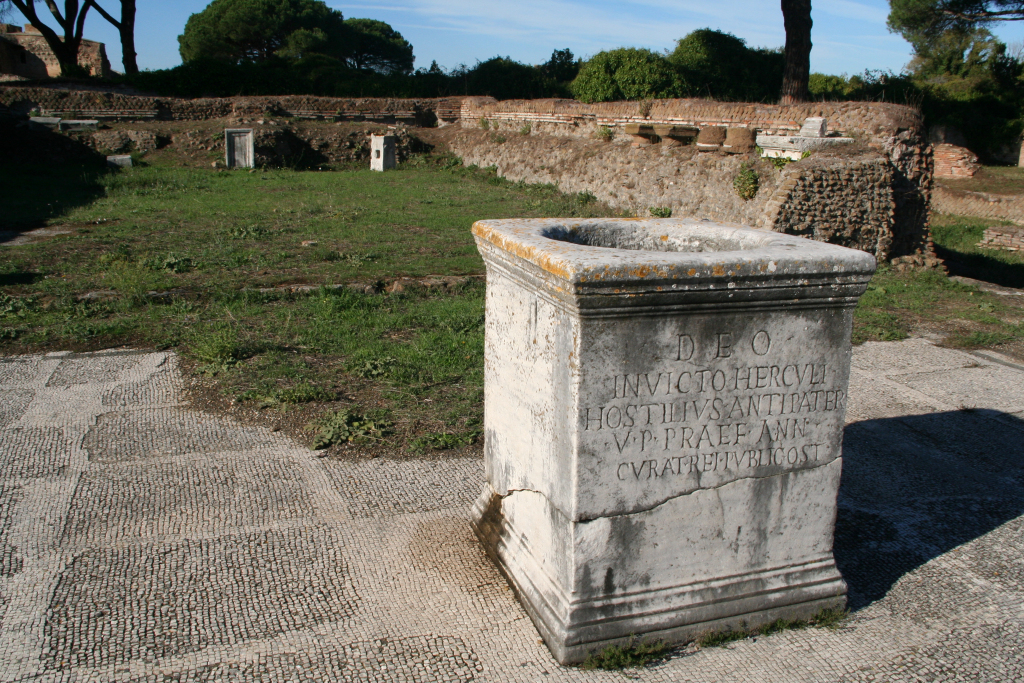
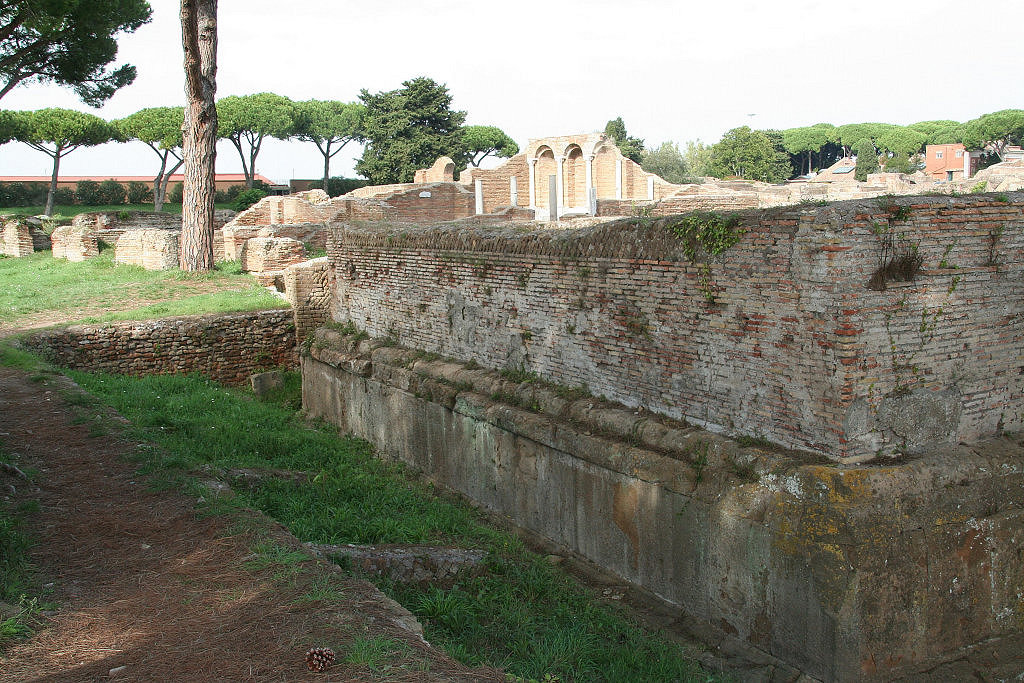


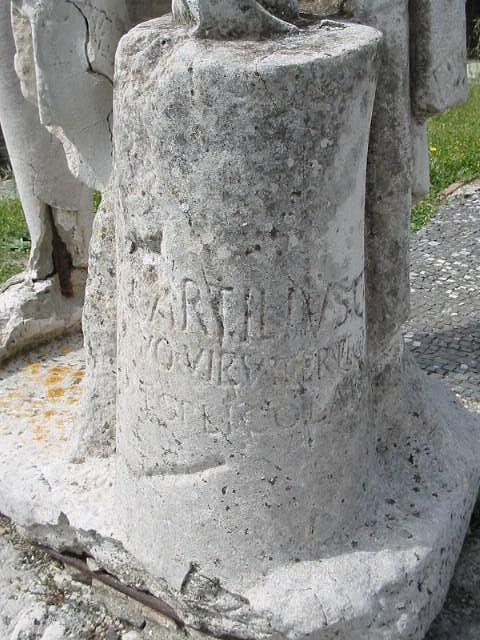
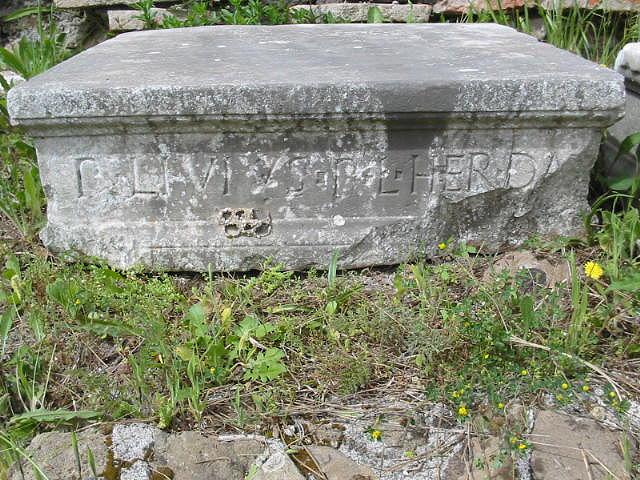
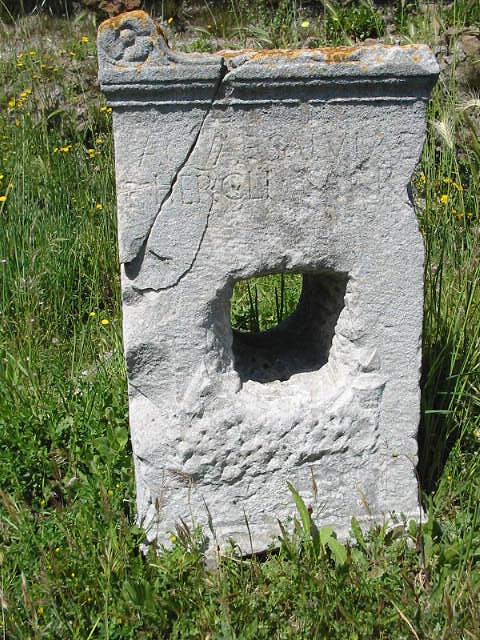
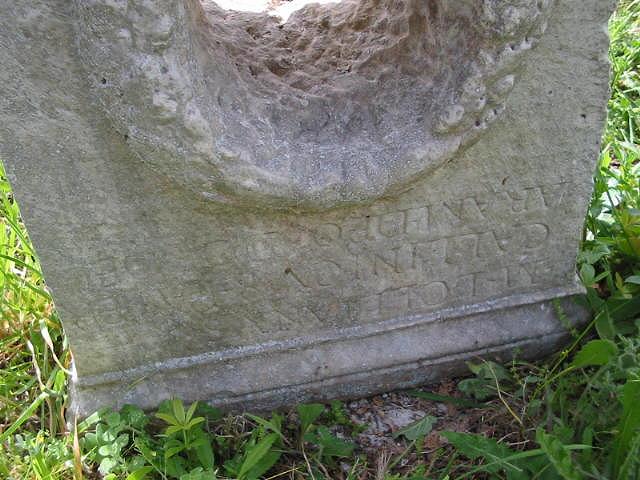
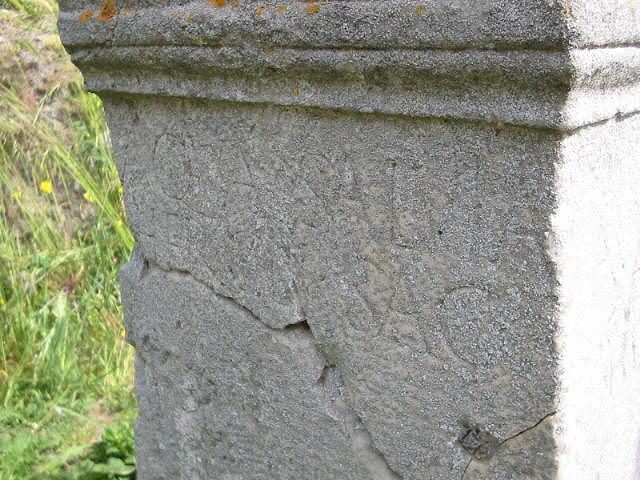
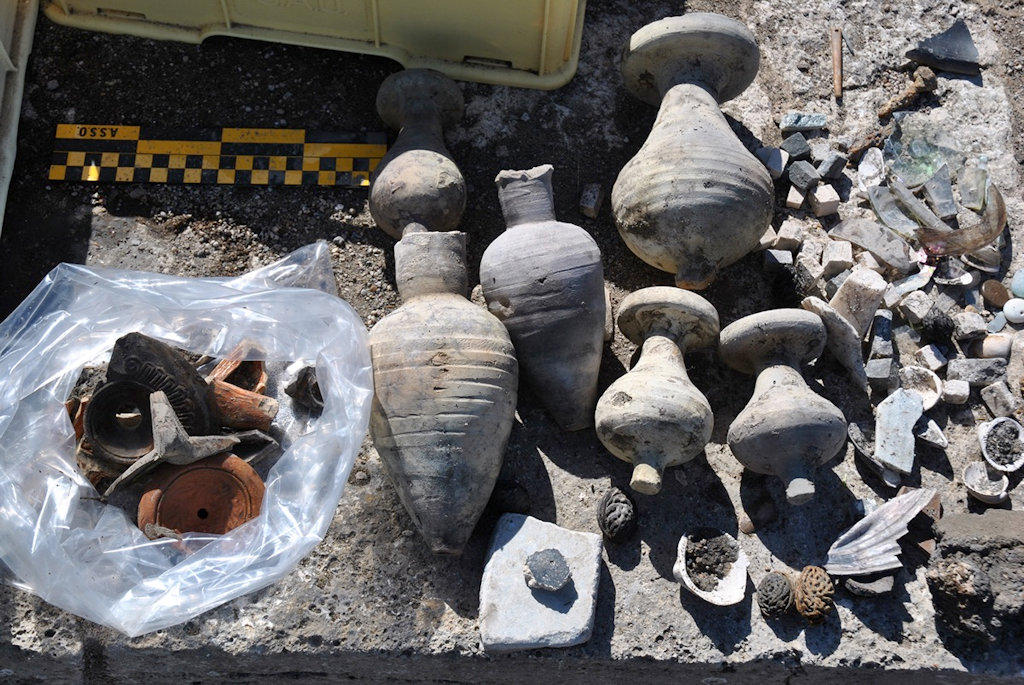
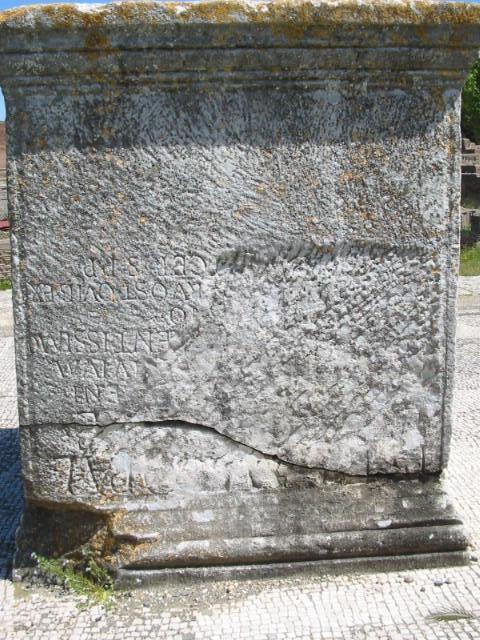
|
P(ublio) FLAVIO PAL(atina) [Prisco, v(iro)] E(gregio) [q(uin)q(uennali) c(ensoria) p(otestate) p(atrono) col(oniae) sacerd(oti)] GENI [colon(iae) Ost(iensis) ---] CIVIVM [--- mer?]ENTISSIMO [patro]NO [corpus mensorum f]RV(mentariorum) OST(iensium) QVIB(us) EX [s(enatus) c(onsulto) coire l]ICET S(ua) P(ecunia) P(osuit) |
|
The altar dedicated by Hostilius Antipater. The back side, with the older inscription, upside down. 231-270 AD. EDR074046. Photo: Jan Theo Bakker. |